Want soft, delicious gluten-free sandwich bread? Then this recipe is for you! It’s easy to make and comes out perfectly every time.
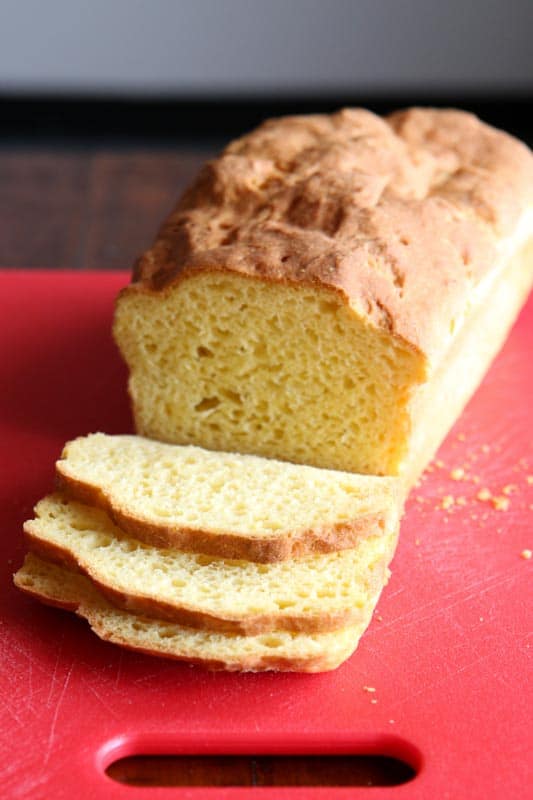
The Best Gluten-Free Sandwich Bread Recipe: Easy, Delicious, and Soft!
Ah, gluten-free sandwich bread. It’s more than a bit of a pain, isn’t it? The pre-made loaves, while light and tender, are expensive and often filled with holes. Homemade recipes save you money but are often dense–and depending on the recipe dry or gummy.
With these problems, what’s a gluten-free eater to do? My advice: don’t give up on sandwich bread!
I’ve baked my own gluten-free sandwich bread for over a decade. In fact, there’s recipes for sandwich bread in both of my cookbooks. But while I love these recipes, I wanted to make a bread that was light and soft. Kind of like–dare I say it?–Udi’s bread but without the holes and the high price tag!
For about six months or so I’ve been working on this recipe. To be honest, I ate way too much bread and butter during these months. That’s the sacrifice I had to make, I guess. 😉 Finally, FINE-AH-LEE, I have a gluten-free bread recipe that’s easy to make, soft in texture, doesn’t fall apart, and tastes great. Oh, and it’s dairy-free, corn-free, and rice-free to boot. I LOVE this bread.
Let’s talk about how to make it. (BTW, I have a lot to say about how to make gluten-free bread. If you just want the recipe, I suggest you scroll down. Way down. Yeah, way, way down. #BakingTeacher #IHeartBreadAndICanNotLie)
How to Make Gluten-Free Sandwich Bread: The Dry Ingredients
Millet Flour
When I set out to make a soft gluten-free bread, I started by looking at the flours and starches I used in previous recipes. Unlike wheat-based bread, which can be made with only flour, water, salt and yeast, gluten-free bread requires a blend of flours and starches. My original bread recipes both use brown rice flour. At the time (old timey gluten-free baker alert!), it was hard to find any gluten-free flours other than rice flour. Using brown rice flour made sense. Today we have lots of other options.
After giving it some thought, I narrowed it down to two flours: millet flour and sorghum flour. Both are tasty and relatively inexpensive. I ended up using Bob’s Red Mill’s millet flour. Have you used millet? I’m in love with it. While brown rice flour can lend a somewhat gritty texture to recipes, millet reminds me of wheat flour. It’s soft. And it contains more fiber than rice flours! Yup! Cup for cup, millet offers twice as much fiber as brown rice flour. A soft texture and twice the fiber? Awesome!
Next up…starch!
Tapioca Starch
Since I was rethinking the flour, I also wanted to rethink the starch. In my first cookbook, Easy Gluten-Free Baking, my sandwich bread used corn starch. In my second, How to Cook Gluten-Free,I used potato starch. For this recipe, it’s all about the tapioca starch.
You might be wondering why you need starch at all. Good question! Wheat and other grains contain a starch called amylopectin. It’s part of their makeup. When combined with a liquid and heated, this starch gelatinizes. It thickens and almost turns jelly-like. If you’ve ever made a stovetop pudding, you’ve seen this happen. One minute the pudding is thin, the next it thickens. This is good news for gluten-free bakers. Without the stretch of gluten, starch helps hold bread together.
Even though grain contains starch, it’s not enough to make a soft sandwich bread. Enter: added starch. Without tapioca starch, this loaf turns out dense and heavy. In the future, we’ll made some rustic bread. Those don’t always need added starch. This loaf does.
The reason I reached for tapioca starch for this recipe is because it adds an almost gluten-like stretch to recipes. Notice I said “almost”. There’s no 1:1 replacement for gluten. It bakes up lighter than both corn starch (which can get a little heavy) and potato starch (which is light but doesn’t add much stretch).
Xanthan Gum
Ah, xanthan gum. (deep breath) Usually the follow-up question to, “Elizabeth, how do I make bread?” is “Why do I need to use xanthan gum?”
Simply put, you need xanthan gum because gluten isn’t present in the dough. Gluten, which comes from the Latin word for “glue”, provides elasticity and strength to traditional wheat-based doughs. If you’ve ever kneaded dough or watched someone throw pizza dough over their head, you’ve witnessed the stretchiness of gluten in action. Without this rubber band-like protein, gluten-free bread dough lacks the essence of what gives bread structure.
Enter xanthan gum.
While I wouldn’t go as far as calling xanthan gum a gluten replacement, it does prevent gluten-free bread from collapsing in on itself. Made from a microorganism called xanthomonas campestris, xanthan gum becomes very viscous and sticky when combined with water. It doesn’t have the same rubber band-like properties of gluten but it does a good job providing structure to gluten-free breads. If you accidentally omitted it from this recipe, you would have a very short, very dense loaf of bread.
Sugar
There’s a wee bit of sugar in this recipe. It helps feed the yeast and helps the crust to brown. Even though it’s only two tablespoons, there’s a big difference in color and flavor between a loaf made with the sugar and one made without. Feel free to use turbinado (Sugar in the Raw) sugar if you prefer.
Salt
Ah, salt! The amount of salt in a bread recipe seems quite small, doesn’t it? There’s only one teaspoon in the entire recipe. However, salt is an essential ingredient in bread dough. It helps enhance flavor, it controls yeast growth (more about this in a sec), and it helps the crust to brown. If you forget to add salt to a bread recipe, the bread will taste flat and the texture won’t be right.
For this recipe, use table salt, not Kosher salt or sea salt. They don’t measure the same (You need to use 1 1/4 teaspoons of Kosher salt to replace the table salt) and sometimes coarse Kosher salt doesn’t fully dissolve in the bread dough.
One other note about salt: when salt is in direct contact with yeast, it will kill the yeast. Never, ever add salt to your water-yeast mixture. You want to add the salt to the flour mixture and whisk everything together. This distributes the salt and keeps the yeast happy. And happy yeast is happy bread!
Baking Powder
What’s baking powder doing in a yeast bread recipe?! I know. I know. Another ingredient to measure (I’m sorry!). During testing of the bread recipe in “How to Cook Gluten-Free”, I wanted the loaf to have a little more rise. Increasing the yeast didn’t provide the lift I wanted. So I tried adding a little baking powder. PERFECT. Since it worked so well, I borrowed the idea for this recipe. It still works great. Commercial baking powder is double acting. This means it releases gas in the bowl when it comes in contact with liquid and then again in the oven when it gets hot. Adding a little lift during mixing and at the start of baking seems to give the yeast a little more room to do it’s thing.
Instant Yeast
The star of the show! Yeast! (woo-hoo!) For some reason yeast makes people nervous. I understand. Unlike other leaveners, like baking powder and soda, yeast is alive. It needs a little bit of special care. Not a lot of care, just a little.
The main thing is water temperature. For yeast to work, you want your water temperature between 105°F and 115°F. For the best results, grab an instant thermometer and take the temperature of the water. At around 120°F, the yeast begins to die and at 140°F, thermal death point kicks in and the yeast totally dies. (#RIPYeast).
For this recipe, I like to use “Quick Rise” yeast. Depending on the brand, this might be called Rapid Rise, Fast Acting, or Highly Active Yeast. This yeast is dried in smaller particles than traditional Active Dry Yeast. Technically, you don’t even need to dissolve it in water. You can add it directly to your dry ingredients, whisk everything together, and go. I prefer dissolving it in water. It’s up to you. If you decide to add your yeast directly to your dry ingredients, increase your water temperature to 120°F.
“Elizabeth! You just said that yeast begins to die at 120°F! Have you lost it?!?”
First, thank you for paying attention. Second, I might have lost it. I can’t keep track of these things. 😉 AnyWAY, about that temperature. It’s higher because the yeast is never in direct contact with the water.
Lastly, water temperature and keeping yeast away from salt is all fine and good. But you need to start with yeast that’s still fresh. I don’t mean cakes of fresh yeast, that’s a different product. I mean check the expiration date on the packet! If it’s expired, toss it and get some new yeast!
BAKER’S NOTE: Is All Yeast Gluten-Free?
Answer: no. While “Saccharomyces cerevisiae” (that’s baker’s yeast to you and me) is a fungus and is naturally gluten-free, some packaged yeast is NOT gluten-free. Always check the label. As of this writing, Red Star’s Platinum yeast was NOT gluten-free. All of their other products are gluten-free. Read those labels!
How to Make Gluten-Free Sandwich Bread: The Wet Ingredients
Now it’s time to talk about what holds everything together, the wet ingredients!
Water
As written, the recipe calls for only 3/4 cup of water. To measure the water, use a liquid measuring cup or weigh the water (more on that below). As mentioned above, water temperature is key to bread baking. Use water that’s around 110°F. If you want to make a rich loaf of sandwich bread, replace the water with milk. Heat the milk to the same temperature as the water. When milk is used, the loaf bakes up slightly darker and has a creamier taste than a loaf made with water.
Eggs
Eggs add fat and flavor to this bread. They also add moisture. Unfortunately, this bread doesn’t do well egg-free. If you look at the photo of this bread, you can see it’s really yellow. That’s because I used local eggs and the yolks were BRIGHT yellow. Did I mention they were bright? When this bread is made with store bought eggs (something I use a lot of the time!), it won’t bake up so yellow. Also, if you prefer a less rich bread, omit the egg yolks and use only egg whites.
BAKER’S NOTE: If you buy your eggs from a local farmer, weigh them before you use them as the size tends to vary. An egg, out of shell, should weight about 50 grams.
Oil
Two tablespoons of fat help to soften the texture of this bread. For this bread, any liquid oil, like olive, canola, or vegetable, works.
How to Make Gluten-Free Sandwich Bread: Measuring
Measuring Dry Ingredients
Successful baking relies heavily on successful measuring. An error in measuring ingredients can cause a recipe to flop.
You have two good options for accurate measuring:
Measuring by Weight
Using a kitchen scale is the most accurate way to measure ingredients. Simply place a bowl on the scale, zero the scale (sometimes called “tare”) and add the ingredients. Zero the scale after adding each ingredient. For this recipe it looks like this: zero —>weigh the millet flour —> press zero—->add the tapioca starch. Done! The rest of the dry ingredients are small and are measured with nested measuring spoons. More on that in a sec.
Measuring by Volume
If you prefer to use measuring cups and spoons, that’s fine. While some claim that it won’t work, I disagree. If you take care when measuring your ingredients, you will be successful. In fact, when I started writing gluten-free cookbooks, few home cooks owned kitchen scales. My entire first baking book relies on volume measures and the recipes work for thousands of bakers.
Here’s how to measure ingredients with a dry measure.
1. Select a set of nested measuring cups. (Prefer metal to plastic. Over time, they won’t warp.)
2. Spoon flour or starch into the cup. Overfill slightly.
3. Level the cup with something straight, like a chopstick or the back of a butter knife.
BAKER’S NOTE: Don’t confuse nested measuring cups with a liquid measuring cup. You don’t want to measure dry ingredients in a liquid measuring cup.
Measuring Small Ingredients: Tablespoons and Teaspoons
Small ingredients are best measured by volume. Many kitchen scales aren’t accurate enough to measure a half teaspoon of salt. For small ingredients use a set of nested measuring spoons. I prefer metal as plastic or those “slider” measuring spoons tend to be less accurate.
For small ingredients, you can dip the spoon right into the ingredients, overfill slightly and then level with something straight.
Measuring Liquid Ingredients
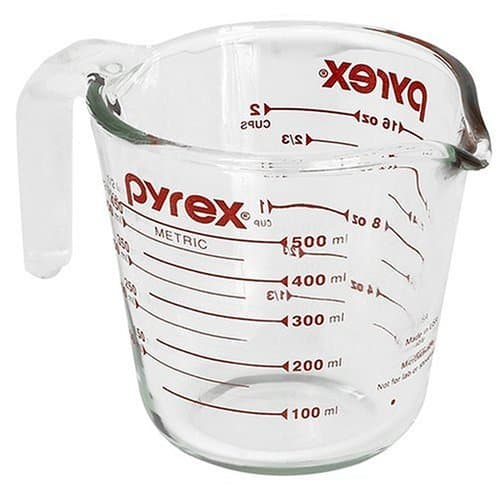
For the water and oil, use a liquid measuring cup, like the one shown above. Fill the cup and squat down to eye level to make sure you have two cups of water. Holding the cup in the air or looking down at it can result in inaccurate measuring. If you are unable to squat down to eye level, Oxo makes an angled measure cup that can be viewed accurately from above.
How to Make Gluten-Free Sandwich Bread: Mixing
Without gluten to hold everything together, gluten-free bread dough looks very different from traditional bread dough. Instead of forming a smooth dough ball, it looks like a thick, sticky cake batter.

The easiest way to mix this thick dough is with a stand mixer. I use a KitchenAid mixer fitted with a flat paddle attachment. With gluten-free bread, you want to ditch the dough hook. It doesn’t mix gluten-free bread well. The paddle attachment, in contrast, does a great job chugging through our dough. Mix on medium-high speed for about three minutes.
If you don’t own a stand mixer, worry not! You can use a handheld mixer for the job. Again, I like my KitchenAid hand mixer for this job. I’ve found other mixers can’t handle the dough. If fact, over the years, I’ve had several readers tell me that they burnt out the motors of their handheld mixers while making gluten-free dough. Yikes!
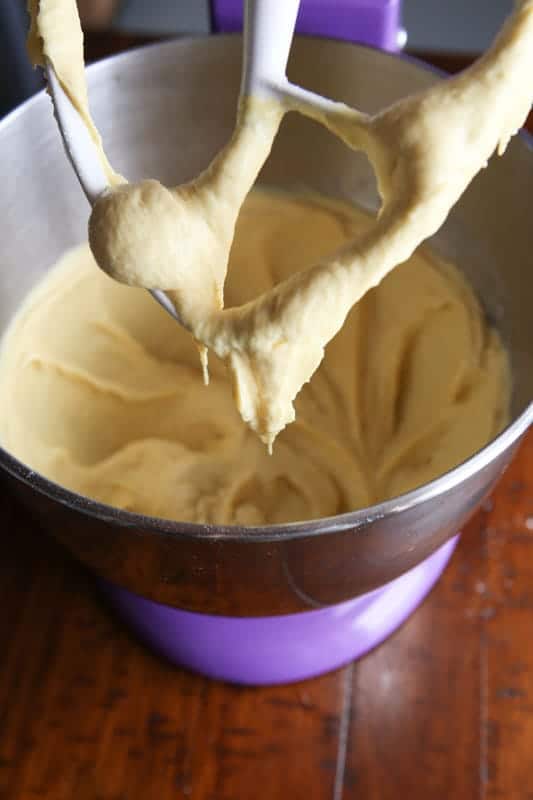
Mix the dough until it’s smooth. You don’t want any dry flour hanging around the bottom of the bowl. Use a flexible spatula to clear around the little bump at the bottom of the KitchenAid mixer.
For this loaf, I use a Chicago Metallic loaf pan. It’s a little smaller than a traditional 9×5 bread pan. In fact, it’s 8-1/2″ by 4-1/2″ by 2-3/4″. If you are going to go to the trouble of making homemade bread, I’d strongly suggest you use this pan. It works GREAT. You end up with a loaf of bread about the size of Udi’s. This is smaller than traditional wheat bread but without gluten, smaller is sometimes better for gluten-free bread.
If you don’t want to invest in new pans, that’s fine! Just know that when this bread is baked in a 9×5 inch pan, it won’t rise as high because the pan is larger than the Chicago Metallic pan.
No matter what pan you use, be sure to spray the pan with non-stick cooking spray before adding the dough.
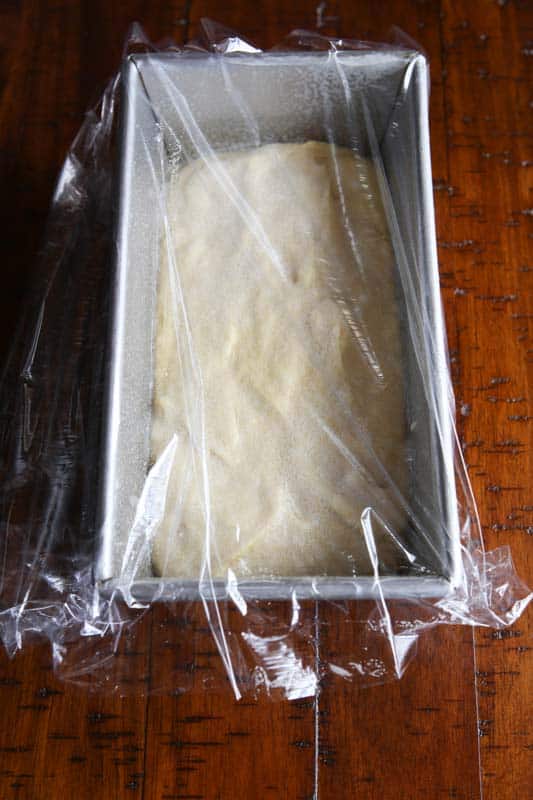
Cover the bread with a piece of plastic wrap that you’ve sprayed generously with non-stick cooking spray. This dough is soft. If you don’t spray the plastic wrap, the dough sticks to it.
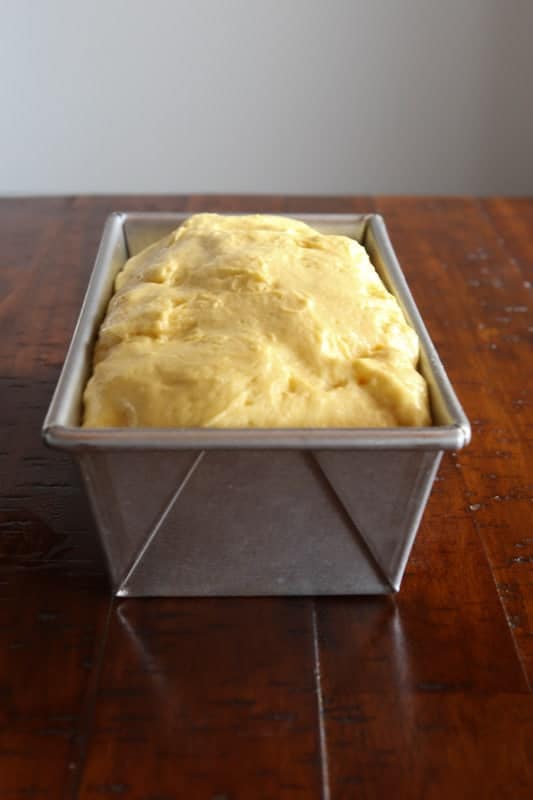
After an hour or so, the dough should have doubled in size. Don’t let it over-rise. While it seems like the higher the rise, the higher the bread, this isn’t true. When dough rises too high, it can collapse during baking. Once the dough doubles, it’s ready to go.
The best place to allow dough to rise is on the counter. If your kitchen is very cold, throw the pan in the oven (be sure the oven is off). You don’t need to find a special spot for the bread. I know some people place their pan of bread on top of the fridge. Um, I don’t remember the last time I dusted the top of my refrigerator. There’s no way I’m putting food up there. 🙂
If you remember that rise time is an estimate, you’re all set. Sometimes bread dough rises fast (usually in the summer) and sometimes it takes its time (usually in the winter.) If after 90 minutes nothing has happened, check to see if you forgot to add the yeast. Occasionally issues with yeast happen but it happens fairly rarely, especially if you follow the directions about yeast above.
How to Make Gluten-Free Sandwich Bread: Baking, Cooling, and Storage!
Finally! It’s time to bake! Yay!
It’s important to preheat your oven before you bake your bread. Something magical happens during the first few minutes of bread baking: the yeast goes into a hyperactive phase. As the temperature of the dough rises, the dough rapidly converts sugars (from the starches in the flour) into carbon dioxide. At the same time, the water in the dough turns to steam. This boost of carbon dioxide and steam help the dough to rise. Oven spring can account for an additional 10% rise.
And then…it all stops. When the temperature reaches 120°F, the yeast hits its thermal death point and dies off. No more rise occurs after this point.

Taking the Temperature
I find it difficult to judge exactly when a loaf of bread has baked all the way through. There’s nothing more disappointing than spending time baking a loaf of bread only to find out that the very center of the bread is under baked. Thankfully there’s a simple solution to this problem: take its temperature. Yup, just like you’d do for a turkey at Thanksgiving!
Stick an instant read thermometer into the center of the loaf. Don’t poke the edges of the bread, the temperature is hotter there and won’t tell you if the center has baked.
The bread should reach 210°F or above. This is slightly higher than the temperature for wheat dough but I’ve found that once gluten-free bread hits 210° F, it’s done.
Cooling
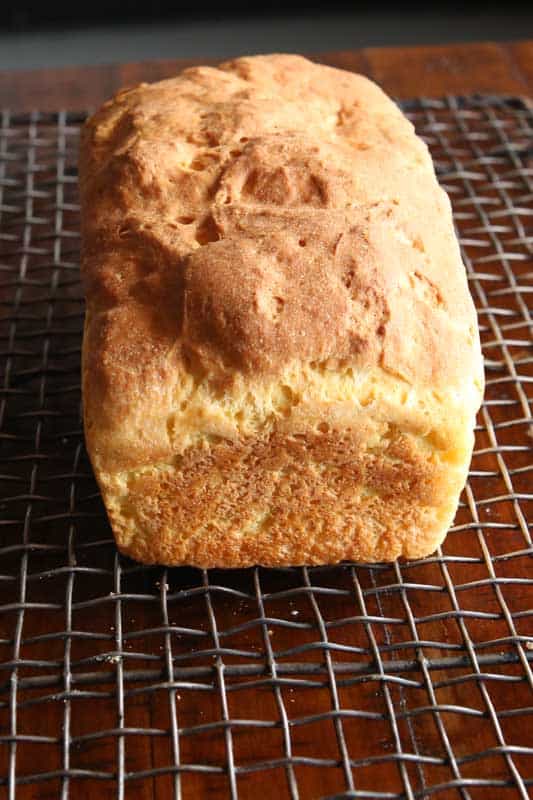
When the bread comes out of the oven, it’s done baking, right? Wrong! It’s almost done baking. Carryover baking occurs because the loaf is so hot. How hot? The loaf is steaming hot and it’s this steam that can cause problems for the gluten-free baker. Remember our friend xanthan gum? It loves to suck up water and it doesn’t stop doing this after baking. You want to ensure that the steam can escape from the baked loaf. If it doesn’t, the xanthan gum and starches can “grab” onto it. This leads to a gummy loaf of bread and soft crust.
To prevent a gummy loaf, remove the loaf from the baking pan and place it on a wire rack to cool. If the bread cools in the pan, the steam gets trapped and the loaf gets soggy, especially on the bottom.
Cutting
Once the bread is cool (or almost cool if you are impatient), it’s time to cut it. Use a serrated knife. Let me say that again, use a serrated knife. A smooth-blade knife will squish the bread. Lots of people ask me how to slice straight pieces of bread. Um….this is one that I can’t help with. They sell bread-cutting guides if this is an issue for you.
Storage
After doing all that work, you don’t want your loaf to get moldy or stale, right? Right!
Bread tastes best the day it’s baked. You can store it on the counter for a day or two. But if you know you aren’t going to eat an entire loaf in a day, here’s what I recommend: allow the loaf to cool, slice, place a piece of waxed paper or parchment between the slices, and slide the whole thing into a freezer bag. When you want a piece or two of bread, remove the bread from the freezer. You can either thaw at room temperature or microwave for 15 seconds.
BAKER’S NOTE: Never store bread in the refrigerator. It stales very quickly in the fridge. Either store bread on the counter overnight or freeze it.
Are you ready to make bread? Yeah, I thought so! Here’s the recipe. Enjoy it!
Shop the Recipe
The following are affiliate links. When you use them to shop, GlutenFreeBaking.com earns a commission.
Digital Scale
Liquid Measuring Cup
KitchenAid Stand Mixer
Bread Pan
Rubber Spatula
Oven Thermometer
Digital Thermometer
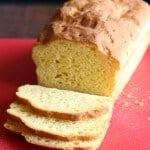
How to Make the Best Gluten-Free Sandwich Bread
Easy gluten-free sandwich. Makes a loaf that's tender and tasty!
Ingredients
- 3/4 cup warm water, about 110° F (6 ounces; 170 grams)
- 1 packet instant/rapid rise yeast (2 1/4 teaspoons; 7 grams)
- 1 1/2 cups millet flour (6 ounces; 170 grams)
- 1 cup tapioca starch (4 ounces; 113 grams)
- 2 tablespoons granulated sugar (1 ounce; 28 grams)
- 2 teaspoons xanthan gum
- 1 teaspoon table salt (not Kosher salt)
- 1/2 teaspoon baking powder
- 3 large eggs , whisked (about 5 ounces; 150 grams total, out of shell)
- 2 tablespoons olive or vegetable oil
- 1 teaspoon apple cider vinegar
- *if desired , replace the eggs with 3 large egg whites.
Instructions
-
Whisk together water and yeast in a small bowl. Allow to stand for five minutes.
-
In the bowl of a stand mixer, combine millet flour, tapioca starch, granulated sugar, xanthan gum, salt, and baking powder. Whisk to combine. Fit the stand mixer with the flat paddle attachment. Add the yeast mixture, eggs, oil, and vinegar. Mix on medium speed until smooth. Dough will be thin.
-
Spray an 8-1/2" by 4-1/2" by 2-3/4" loaf pan with nonstick cooking spray. Spread dough evenly into the pan. Spay a piece of plastic wrap with nonstick cooking spray and place plastic wrap loosely on the pan. Allow dough to double in size. This takes about one hour.
-
When dough has doubled in size, preheat oven to 350°F. Remove plastic wrap from the top of the pan.
-
Bake until the internal temperature of the bread reaches 210°F, about 45 minutes. (If the crust gets too dark before the internal temperature reaches 210°F, place a piece of foil onto the bread. This prevents the crust from burning.)
-
Remove bread from the oven and allow to cool for two minutes. Transfer bread to a wire cooling rack to cool completely.
-
When cool, slice into pieces with a serrated knife.
-
Store bread on the counter for up to three days or freeze sliced bread, wrapped in freezer wrap with waxed paper between each slice, and placed into a freezer container, for up to six weeks.
Recipe Notes
This easy recipe for gluten-free sandwich bread contains no corn, dairy, or soy. Be sure to use an 8-1/2" by 4-1/2" by 2-3/4" pan like this one by Chicago Metallic. If you don't have this pan, use a 9x5-inch pan. Bread baked in a 9x5-inch pan will bake up shorter than bread baked in an 8 1/2 x 4 1/2-inch pan.
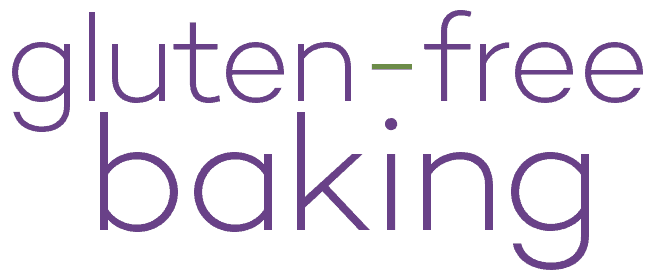

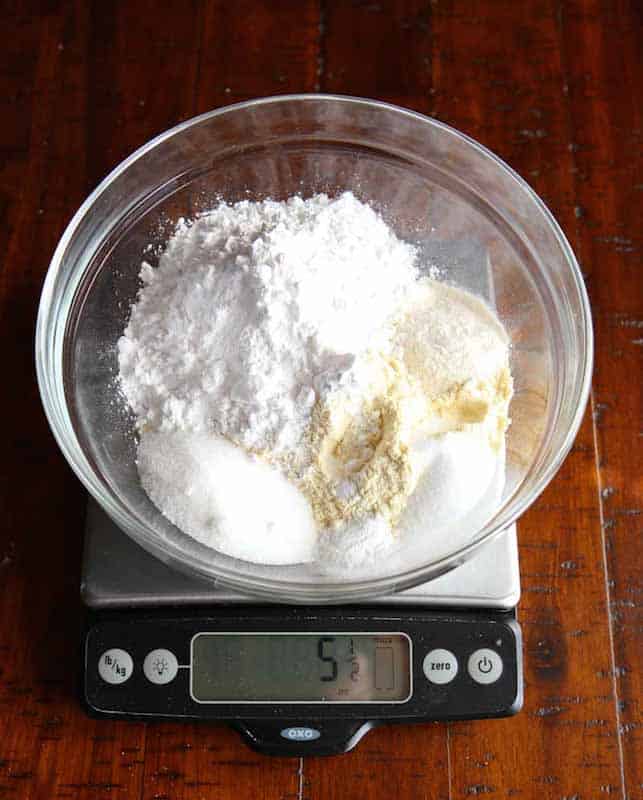
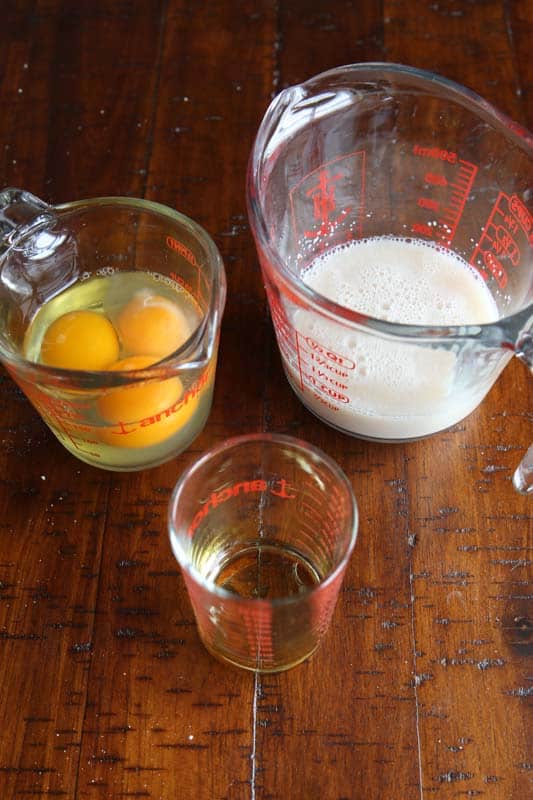

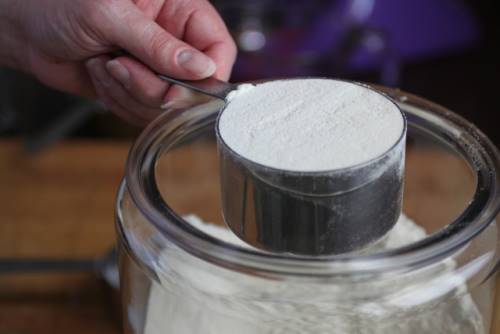
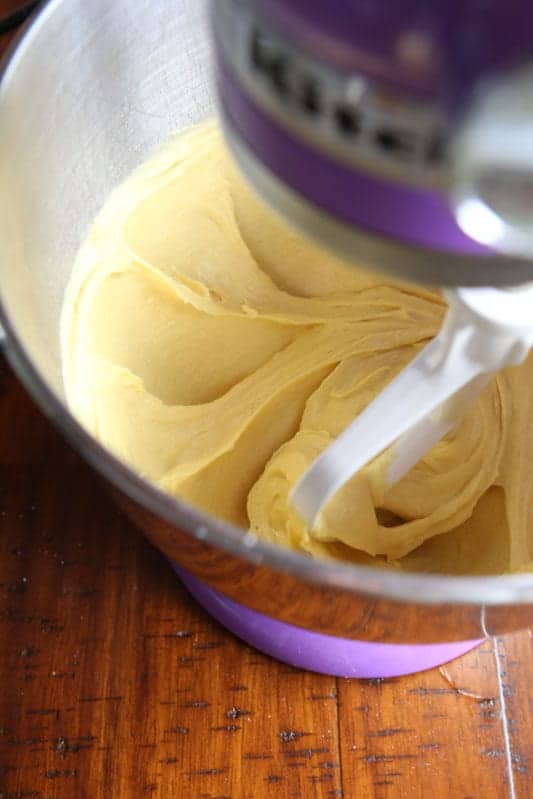
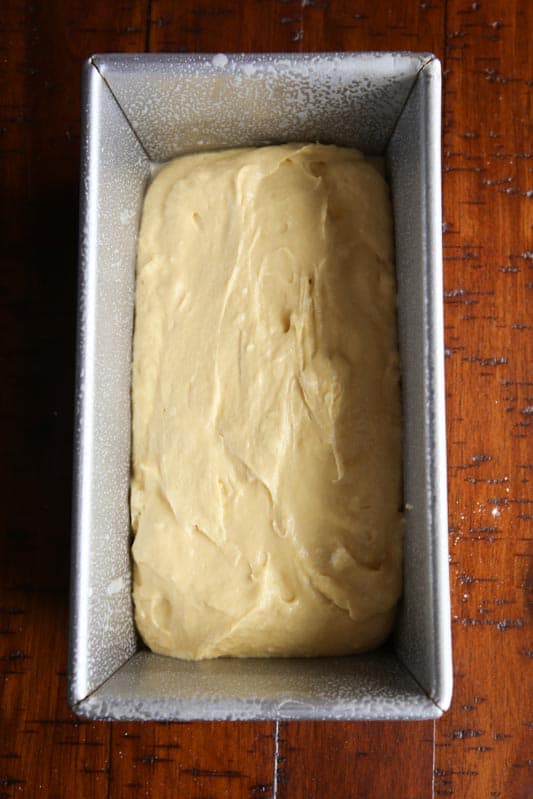
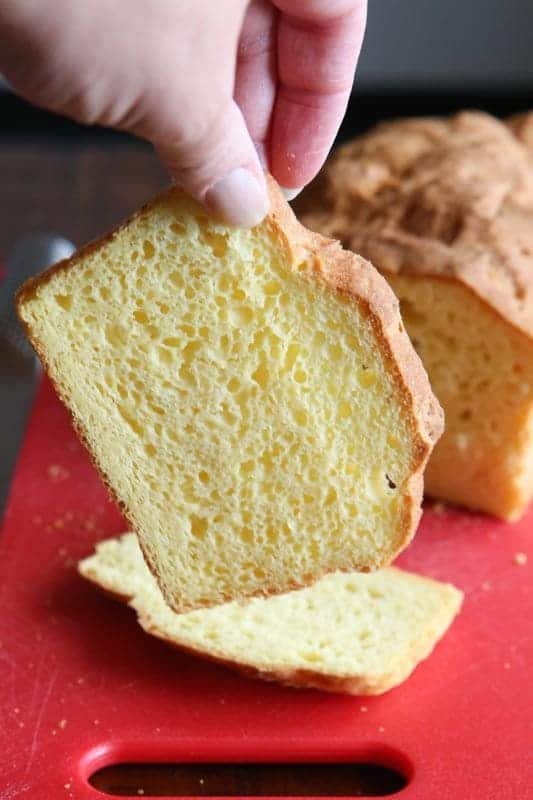
Kathy says
I didnt notice the oven temperature for the bread what was it, thanks
Anna says
Way too much talking. Would have the bread made in the time it took to read the whatever it us you were talking about ?
Elizabeth says
Hello.
I appreciate this comment because it’s given me the opportunity to share some things that are important to note.
There’s one simple reason there are so many words above my recipe: I want my readers to succeed.
If someone understands (or doesn’t care about) the properties of millet flour or why gluten-free bread is best baked to 210 degrees, not 205 degrees F, like wheat bread, then simply scroll down–as you did to leave this comment.
My career began with a degree in baking from the Culinary Institute of America. In the last 15 years, I authored three books on gluten-free baking, taught countless baking classes, and publish this blog. I’m here to share what I know from a place of trust and expertise.
When someone uses one of my recipes, they are trusting me with their time and ingredients. I never take that lightly. I openly share what I know–which for bread baking is a lot. It helps readers succeed and enjoy, in this instance,some excellent bread in the process.
Marilyn says
Thank you for this recipe and all the tips. I made the bread with sorghum flour and arrowroot starch (that’s what I could get) and the whole family loved it. So much tastier than store bought gf bread. One question though – I baked it in a pyrex loaf pan. The baked bread is hard to get out of the pyrex, even though I greased it and also put some parchment paper in the bottom. Would I have the same problem using a metal pan? or maybe this is caused by my substitutions.
Elizabeth says
Glad you liked the recipe!
How long are you letting the bread cool in the pan? And where is it sticking? The bottom, sides, or edges?
Marilyn says
I only let it sit in the pan a couple of minutes, as you directed. If I don’t put the parchment paper in, the bread sticks on the bottom, sides and edges. I used a knife to go all around the sides, but still had a hard time getting it out, and a little of the bottom broke off in the pyrex pan.
But if yours doesn’t stick at all, maybe I’ll try a metal pan next time.
Marilyn says
Also, the link above to the loaf pan doesn’t work. Is it a non-stick loaf pan?
Zoe Mortensen says
Sorry to comment here. I can’t find how to post my own question. Ordering Millet Flour and there is Finger Millet Flour also. Which do you recommend? I always freeze my bread because I don’t use it all right away (maybe 2 slices a week). Can I slice this up and freeze? Should I put parchment between slices so they won’t stick together?
Thank you!
Elizabeth says
Good question. I’ve only used what I believe is pearl millet. I haven’t seen Finger Millet flour.
This bread freezes very well! Allow the loaf to cool completely and then slice and place a piece of parchment between to prevent them from sticking.
Larry says
I made it exactly like the recipe and it came out perfect. (different loaf pan).
Kathleen says
Hi when you say the dough will be thin, exactly what do you mean, do you mean runny
Elizabeth says
Hi Kathleen,
No, the dough won’t be runny. It should resemble a very thick cake batter. Unlike wheat-based bread dough, it won’t form a dough ball or be knead-able.
I hope this helps!
Lisza Jessel says
I don’t normally comment on recipes. But I had to on this one. It was amazing. I did not have millet flour, so I substituted a mix of mostly buckwheat flour some amaranth, and a small amount of white rice. I baked it in a glass pyrex. It worked perfectly so yummy. But I’ve been wanting to get away from using xanthem gum because not healthy. So I made the loaf again oh, this time mixing buckwheat and teff flour, and a tiny bit of white rice flour. And I took out the xanthem gum, and used about one tablespoon of ground chia seeds. This time the batter was much thinner. I didn’t think it was going to have a good texture. Well it did. Almost exactly the same as the first loaf. Thank you for a great recipe.
Linda says
Hello there, I am new to this gluten free bread baking and have tried six recipes before i found this one and this is the best. I used a cup millet flour and 1/2 cup gluten free oat flour and followed the rest of your recipe exactly and I was a hundred percent happy with the results, Thank you so much. This is a keeper for me
Lisza says
I know I already left a comment but there’s more to say. I really appreciate your instructions and hints that made it so successful. Being able to weigh the ingredients allowed me to substitute flowers without worrying that they didn’t have a cup to cup equivalent to each other. Also I didn’t know about the steam and gluten free products. So I was sure to get my loaf out of the pan quickly. Thank you again.
Jeanne Roche says
Thank you, Elizabeth, for this recipe! I followed the recipe exactly (which I don’t usually do!) and it turned out perfect! It even looks like yours. The taste and texture are just what I want in a home baked bread.
When I looked at your books on Amazon, I discovered (author info) that we live in the same area. I’m on the other side of the river. I suspected you were local to this region when you had a recipe for cider donuts! Which I will be making this autumn, along with apple fritters. And those individual apple pies look yummy! Yes, I am ready for Fall!
Kathie says
Hi Elizabeth, many thanks for a great recipe. Can you please tell me can I use Guar Gum instead of Xanthan Gum. I can’t get my hands on any Xanthan Gum and was told that the Guar Gum works the same way. Have you ever tried this in your Gluten-Free Bread and is this true?
Many thanks
Kathie
Elizabeth says
Hi Kathie!
Good question! Guar gum and xanthan gum are interchangeable. (So 1 teaspoon xanthan gum=1 teaspoon guar gum). However, they do bake up a little differently. Guar gum tends to be a little starchier and doesn’t provide the exact same structure. So while it’s not my first choice, you can certainly use it in this recipe
Lisza says
I subbed out the xanthum gum for 1 tablespoon of ground chia seeds, you could also try flax, and it was perfect. Baked just like the loaf i made with the xanthum.
Lin says
Hello, I am trying to stay away from xanathan gum and wonder if i could use grass fed gelatin in place of it and how much would i use in this recipe, Thanks Lin
Elizabeth says
I haven’t tried the recipe with gelatin. Sorry!
Lisza says
I omitted the xanthem gum and used 1 Tablespoon ground chia seeds. It worked perfectly.
ANNMARIE says
I am about to try try this recipe out and discovered I don’t have apple cider vinegar. Arrgh! Can I substitute regular vinegar and how will this affect the flavor? You didn’t touch on the apple cider vinegar in the your narrative of the wet ingredients.
Elizabeth says
Yes! That works. The vinegar acts as a flavor enhancer and (very mild) tenderizer.
ANNMARIE says
So that is what I did and now I’m about to bake it up can’t wait to try this recipe! Thanks so much for sharing this recipe!
evelyn Rot says
Wow Elizabeth, my dad was laughing at me from above as I substituted so many ingredients and made a total mess trying to make rice flour in a food processor. It didn’t work, so I used oats. I wanted to use your tips and try to bake a better bread even without having half the things I needed. But the bread came out great, dry fluffy bread texture, great taste, not crumbly, not wet or gooey in the inside, not heavy and dense, but really good! Even got a good grade from my husband! Through out this whole corona period I have been trying to make good bread and thanks to you it happened today. I used 1 cup oats, 3/4 cup spelt, 3/4 cup lentil flour, 1/2 cup almond flour, 1/4 cup grounded flax, 1 teaspoon salt, 2.5 tablespoons chia and 2.5 tablespoons pysllium husk, 1/2 teaspoon baking powder all at room temperature and mixed together in the food processor. The 2 1/4 teaspoons of dry yeast sat about 7 minutes in the 100 degree 1 1/4 cup water with 2 tablespoons sugar. I used 3 egg whites, 1/4 cup oil, and 1 teaspoon apple cider vinager and mixed all the liquid with the dry and poured into a long thin tin (didn’t have others) lined with parchment paper. It sat for an hour to rise. It went into a preheated 350 degree oven for 35 minutes and the other 35 minutes covered with more parchment paper. For an extra 10 minutes it baked out of the tin and then without paper with the oven door open and the oven turned off for another 10-15 minutes to cool and then on a cooling rack. It was hard not to eat and eat and eat. I did what you said, but used what I had at home and it was a miracle that it actually came out great. THANKS SO MUCH FOR ALL YOUR GREAT DETAILED TIPS
Elizabeth says
I’m so glad you enjoyed the bread! It sounds delicious.
(Just a small note for anyone reading the comment: spelt flour is not gluten-free.)
Paul Merritt says
I am not gluten-free in fact I love bread and I bake a lot, but my daughter is gluten free and I have been baking this bread for her and she says it is the best gluten-free bread she has ever had. I even like it. One extra thing I do is add A very small amount of rosemary.
Thank you for all the work it took to develop this recipe. Paul
Cara Adams says
Question : In your description you say the recepie won’t work unless you use eggs. Can you substitute flax egg replacement?
Elizabeth says
I haven’t tested it with a flax egg. Sorry!
Serene Chan says
Hi Elizabeth,Today, I’m made it with 3 chia eggs. Initially, it raised well but while baking, the centre collapsed and the texture is a bit gluey. Should I reduce the amount of xantham gum or the chia eggs?
Elizabeth says
Oh, good questions. Are you using both chia eggs and xanthan gum?
Sorry for the delayed response! Somehow your comment got caught in the filter. I just saw it!
Bonnie says
Hi..I made this bread yesterday and it was really good..the only thing was it tasted a bit starchy..but very moist and had holes in it..guessing it wasn’t mixed well enough as I had to mix by hand didn’t have kitchen aid and hand mixer didn’t work…also would traditional yeast work in this recipe?…next time might cut back starch and add a bit more millet and some Italian seasoning for a bit of different taste…
Elizabeth says
Hi Bonnie,
When you ask about traditional yeast, do you mean fresh cake yeast? It can be used, however, in my testing, I found it somewhat unreliable. So if you are able to get fresh yeast, be sure it’s fresh and follow the package direction for how much fresh yeast to use for dry. (Usually, you need twice as much but that can vary by brand.)
Susan says
I happened to have all the ingredients you listed and I made it just as you said. We raise chickens so our eggs yolks are also very bright. The bread turned out beautiful! My husband is so tired of dry crumbly tasteless bread that he has been having me make him thin pancakes for his bread. I reached the end of my pancake rope so I tried again to find a good bread recipe. Thank you very much for this one. You may have saved my bread making sanity and if he does not approve of this one, he may have to buy his own ready made pancakes. This bread is wonderful. Thank you for the tips too. I think those helped tremendously to make it great!
Patricia Weber says
Hey I was wanting to try making your recipe but I don’t have a stand mixer. So I was wondering if it would work if I just stirred it by hand?
Elizabeth says
Yes. That will work. I’d use a wooden spoon and stir it until very smooth.
Joanne says
Dod you leave water out of the recipe. Mine was thick not loose as the pictures show and I followed the recipe to a T. Waiting for it to rise now. Haven’t baked it yet. Something seems wrong.
Elizabeth says
Hi Joanne,
There’s 3/4 cup of water in the recipe. If the dough seems too thick, add an additional tablespoon or so of water. Hope that helps!
Marlena Laframboise says
I have a Zojirushi bread machine which is longer vs taller than other bread machines and has 2 blades at the bottom of the pan which spin to mix the dough. I can create my own timing scedule mix, rest, rise and bake. Have you used a bread machine for baking bread and could you recommend rise time?
I was thinking to add the salt in after the mixing the dry and wet similar to auot-lease in Sourdough bread, what are your thoughts for this?
Lastly I’d like to substitute Xanthum Gum with Pyssillium husk but unsure of ratio, 1 to 1 ? Do you have advice for this? I don’t have chia seeds ; )
Thank you for any help you can give.
Ps.
Incredibly I’ve made a 100% perfect bread. Seen in this video link (link removed)
Which is a partial video, I didn’t record my entire process. I changed the recipe from the my usual recipe (seen at beginning of video) which sub’d out xantham gum with Pyssillium husk. : (….. can’t get the same results I’ve tried so many different ways. So aggravating.
Elizabeth says
Hi Marlena
I have the same Zojirushi you do and find that it’s too big for this recipe. The good news? I’m working on a bread recipe specifically for bread machines. It should be posted soon!